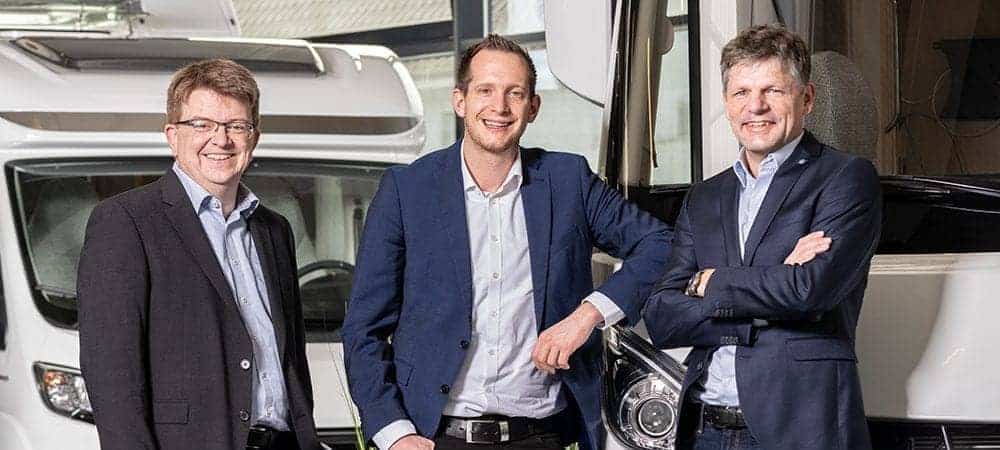Success factor SCM


Successful E2E concepts of an industrial supply chain are based on several parameters that are mostly valid at the same time, yet can also be contradictory. Is harmony or agility to be given precedence?
"ERP systems for international companies with only one installation have immense advantages in terms of harmonization of processes, cross-country financial transparency and process integration"explains Jürgen Löhle, company owner of SAP partner Consilio, at the start of the E-3 conversation. But there are limits, he warns:
"However, as the size of the company and thus of the system increases, agility, i.e. the ability to adapt quickly to changes, is somewhat lost. SAP has recognized this and is adapting its architecture, e.g. with cloud solutions, to allow change to flow in more easily. For example, with Integrated Business Planning, SAP has a supply chain planning tool that is tightly coupled to the ERP but can also be adapted quickly based on changing market conditions and experiences without having to rebuild the core of the ERP system."
However, the prerequisites for any supply chain excellence are industry experience, process know-how and the ability of a consultant to recognize the individual customer needs and to be able to adapt his solution concept to these. The requirements and challenges around SCM include smart factory, automation, artificial intelligence or robotics.
As far as the techniques used are concerned, IT development knows no boundaries. It is an evolutionary path and not a disruptive customizing. Based on this insight, SAP-based Integrated Business Planning has been developed in recent years, which incorporates decades of knowledge from the areas of scheduling, logistics and supply chain and continues to grow dynamically. Success in the SCM area is based on optimization.
"The Corona crisis has exposed the weaknesses in global supply chains. As a result, supply chain management is now being reconsidered in many places. There are a number of adjusting screws that can be turned.", writes Annette Speck in the book review: New start for supply chain management? Publisher Springer Fachmedien, Wiesbaden: Cooperation Platforms for Supply Chain Management Design Recommendations for Cooperative Supply Chain Coordination by Ronald Poppe (ISBN: 978-3-658-16368-6).
In the meantime, numerous industrial companies apparently also see a need for improvement, says Annette Speck, citing the study "Restart after the Shutdown 2020" by the management consultancy Staufen. Triggered by the interrupted value chains, the respondents primarily want to look for additional suppliers in the future and manage their supply chains more closely. In addition, 36 percent are planning to build up inventories, and a quarter are aiming for greater vertical integration.

"Internationally networked supply chains will continue to determine production right through to distribution in the future. In the future, however, the various processes will be even more closely coordinated with one another."believes Thomas Schlösser, senior partner at Staufen.
In order to get a grip on the increasing complexity, intelligent control of all participating partners in the process chain and a more cooperative network structure are necessary. In addition, the value chain must be viewed holistically, which also includes network-oriented risk management.
Innovation and optimization
"SCM optimization usually cannot be completed with a one-time project"David Reibnegger, partner at Consilio since 2008, knows from his professional experience.
"The main effort of process analysis, process design, customizing, etc. is certainly in the initial project. However, usually not every aspect of an SCM optimization is tackled at the same time due to the risk and complexity of the planning issues."
In addition, there are always learning curves or changes due to external influences such as market changes for everyone involved. This makes continuous improvement more necessary.
The success of an SCM optimization can certainly not be determined by individual points, but is an interaction of several factors such as software, IT architecture and the experience of the acting persons on the customer and consulting side.
"If significant improvements are to be achieved, e.g. inventory and lead time reductions, increased delivery capability, it is not enough to just implement a new software solution e.g. consider all resources as finite bottlenecks." warns Jürgen Löhle in an E-3 interview, and he points out the many important details:
"Rather, the material flow and value stream must be accurately analyzed, stocking levels and heights reviewed, and lot-sizing procedures and their parameters modified."
The question thus arises, to what extent is an SCM optimization generic and can be offered as a template, among other things, or is a supply chain extremely individual compared to accounting? Here David Reibnegger answers:
"In the context of SCM optimization, there are many aspects that are good to offer as templates or best practices because they can be handled similarly by very many customers, such as sales planning or rough period-based supply chain planning for production, purchasing and distribution.
But the finer you go into the individual production planning problems, for example, the greater the differences from industry to industry and also between companies in the same industry, sometimes right down to different machine conditions - so perhaps not every supply chain is individual, but a template per industry or best practices that is customized again if necessary would be a good compromise between standardization and individuality."
Many projects do not start on the proverbial green field. In the ERP/ECC world, as is well known, some Abap modifications and Z functions have been carried out. How do customers and Consilio deal with this issue and what are the technical solution options for the Z namespace and Abap modifications?
"At the management level, there is a desire for the SAP standard, without modifications and enhancements." Jürgen Löhle knows from numerous discussions with customers.
"As Consilio, we support this approach, however, modifications and extensions have also arisen in companies that allow the specialist department to work much more efficiently than with SAP standard. Often, these inefficiencies continue to exist under S/4. We therefore analyze very carefully in the context of S/4 transformations to adopt as few modifications and extensions as possible, but without losing efficiency. In this way, we keep the S/4 code in the standard and thus enable the ERP system to become more easily adaptable and maintainable."
Yes, just make a plan
Without taking Bertold Brecht's quote from the Threepenny Opera too literally:
"Yeah just make a plan, just be a big light, and then make a second plan, go, they both don't".
Experience shows that SCM is much more individual and agile than an accounting or HCM system, so of course the question of specific customizing always arises. Consilio has written its own module for sales planning for the S/4 Hana conversion customer Hymer, why? Consilio partner Reibnegger:
"As part of a proof of concept, the requirements for S&OP planning were aligned with Integrated Business Planning. APO DP was no longer considered due to its discontinuation by SAP. IBP covered the basic planning requirements very well, in fact there was much more functionality available than Hymer needed.
Only the integration of the SAP Vehicle Management System and the integration into PP/DS would have required adjustments. However, a cost-benefit analysis showed that the business case was not worthwhile and that an in-house developed SAP cloud solution was more economical. Currently, the decision could possibly be different, as SAP would perform better with the new licensing model for IBP." But IT life is also change.
The challenges start with the choice of migration path, i.e. should a brownfield, greenfield or X-field approach be chosen? Medium-sized companies with short decision-making paths and pragmatic approaches usually find the decision easier than large companies with several billion in sales, plants and company codes in the high double digits and comprehensive SAP system landscapes.
Ultimately, however, a roadmap can be developed with a few questions and objectives. The critical factor is often the lack of willingness in the specialist department and also in some cases in IT to "do something new" or to rethink is often very difficult and requires a sure instinct. And how did Hymer experience the conversion?
"At Hymer, the decision to go with S/4 Conversion was relatively easy." reports David Reibnegger.
"Hymer only used ECC in FI/CO and for spare parts processing with SD and WM. Implementing Hymer's core business in ECC so that it then had to be converted to S/4 would not have made sense. The actual conversion was child's play compared to the implementation of the core business in S/4. New functionalities were not implemented in the conversion, only the mandatory adjustments, simplifications, were made.
After the conversion, the S/4 implementation of the core business of development, production and procurement of vehicles and the necessary parts was implemented with functionalities in the sales, production, logistics and planning environment. In the process, new available functionalities in the SD, MM, PP and PP/DS environment were introduced in a greenfield approach. Since this was a new implementation and the conversion was performed as an upstream step, this can be compared to a classic SAP new implementation."
SAP existing customers who have a tradition and experience with R/3, APO and now ERP/ECC 6.0 and need optimized SCM in a timely manner - should these users migrate to Hana and S/4 first?
"There are many migration paths and migrating SAP ERP/ECC to S/4 Hana is not a prerequisite for optimizing supply chain planning with IBP"Jürgen Löhle explains the different tasks.
Under the young SAP CEO Christian Klein together with his motivated board members, the ERP world market leader has taken an amazing development. Product know-how and quality are again in the foreground and Klein wants to further expand this direction and develop the best products for SAP's existing customers. With IBP, Hana, S/4 and PP/DS, challenging tools and SW solutions are available. How does the SAP community react to these offerings? Are the solutions adequate for the current needs of SAP's existing customers?
"SAP's high innovation cycle with the new products and solutions can be seen as very positive, according to discussions and previous experiences with customers," reports David Reibnegger from the SAP community. SAP, like many other APS providers, offered this solution in an additional system, APO. However, this was very costly in terms of IT architecture and integration and put off many companies. "We now see a clear trend that existing but especially new customers are using the integrated production planning solution, ePP/DS." David Reibnegger explains.
Particularly in the current period with strongly fluctuating demand, it is becoming apparent that rapid responsiveness is not possible with conventional production planning. With aATP, SAP now also offers an availability check integrated in S/4 Hana, which is very well received in the market and offers a variety of new functions.
IBP is also a solution that is very well received in the market to make corporate planning from a sales planning, sales planning, production program planning, financial planning, to a liquidity planning fit for the future and the changed market conditions.
ePP/DS versus APO
Certain solutions, such as PP/DS or global ATP, have migrated from a central APO to the new S/4 Hana. Jürgen Löhle comments:
"You really have to take a differentiated view of this point. In a corporate group, you often encounter an SAP architecture with several ERP systems. This will probably still be the case with S/4, albeit to a reduced extent.
Groups with sales of 100 billion euros or more are unlikely to rely on a central S/4 system, but will continue to use several productive systems organized by region or industry. In this environment, side-by-side system architectures for advanced planning systems such as APO are appropriate. These companies are also calling for a decentralized - side-car - APS solution in S/4.
SAP has also reacted here and - as the roadmap shows - will offer an S/4 PP/DS as a side-car. For mid-sized companies in the low single-digit billion sales range and below with a productive system, the joy about the embedded PP/DS for production optimization and detailed planning is great. The solution can be activated very easily via customizing and the relevant objects - materials, work centers, etc. - can be transferred to advanced planning with a simple switch."
MES, SCM, logistics have finally become a central topic. Jürgen Löhle draws the conclusion from this:
"SAP covers the requirements very comprehensively with the S/4 Hana ERP system and the included new functionalities such as embedded PP/DS for detailed production planning and optimization, advanced availability check, aATP, or even extended warehouse management and the existing solutions in S/4 such as MM, PP, SD, etc. as well as IBP, for supply chain planning the market."
This gives companies an immense toolbox from which they can draw, and SAP dominates the market here. The MES market is much more heterogeneous than the ERP market and even includes complete proprietary developments by application companies. Often, companies have not yet connected an MES to their ERP system in order to integrate the store floor. In the context of Industry 4.0 and digitalization, many companies recognize that they still have to close gaps here and integrate the store floor with the ERP systems.
But Jürgen Löhle knows that SAP offers a range of systems and services that make it quick and easy to collect, process and evaluate machine data. Planning provides data required for optimal coordination of resource planning and production execution. It covers all aspects of the manufacturing cycle from production order to order fulfillment and beyond.
The SAP Manufacturing Excecution solution consists of ME - Manufacturing Execution, MII - Manufacturing Intelligence and Integration and the Digital Manufacturing Cloud. "SAP Manufacturing is a powerful, scalable manufacturing solution from the machine and plant level to the enterprise level. With its help, manufacturers can manage and control their manufacturing and production operations," Löhle concludes.








